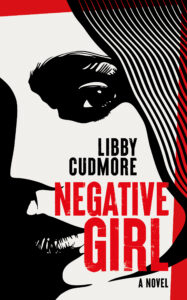Recently, a friend and fellow writer asked me to give him some advice for how to write a mystery novel. I offered him craft books and a template that I use to teach my own classes before catching myself in a realization.
“If you really want to study how a mystery is put together,” I said. “Re-watch Who Framed Roger Rabbit? and take notes.”
As much credit as I always give reading Raymond Chandler’s The Long Goodbye in college for setting off my career in detective fiction, looking back, Eddie Valiant (Bob Hoskins) planted the first seeds of what would grow into a lifelong obsession. Valiant is, in many ways, a stock character—fedora and trench coat, tragic backstory and empty bourbon bottles, but he also provided an accessibility for a young viewer and set in place my most important lesson in mystery writing—that the mystery is just one part of it. To really make a mystery pop, you need to populate it with rich, fully-fleshed out characters—a frantic rabbit, a femme fatale with a heart of gold and a voice like honey, and a terrifying twist on an already wicked villain—few scenes in cinema make a Millennial squirm as much as re-watching that little sweet little shoe melt into The Dip.
And Valiant wasn’t the only one. Looking back, I was drawn to the detective, mystery and crime genres much earlier than I had realized.

Harriet M. Welsch, Harriet The Spy (Louise Fitzhugh, 1964) and The Long Secret (1965)
I must have read Harriet The Spy two or three times a year when I was a kid, and The Long Secret at least half a dozen times. Though the second one has more of a mystery element—who is leaving Bible-based threats all over Water Mill, Long Island—but more than anything, Harriet demonstrated that the kind of mystery novels I wanted to write put the characters lives first, with the mystery being the structure for telling that story.

Sam & Max, Sam & Max Hit the Road
I’m a casual gamer at best, but when I discovered Sam & Max Hit the Road, I became obsessed. Created in 1993 by Steve Purcell, the freelance police, Sam (a dog in a suit) and Max (a rabbity-thing) were tasked with solving cases involving the strange and supernatural, and, in the point-and-click adventure game format, I had to figure out how to use the evidence in my possession—a mood ring, a snow globe, a rasp stolen from a gas station bathroom—to track down a missing Bigfoot. Detective novels require logic, both on the part of the detective and the reader, and Sam & Max have always forced me to look at logic in a whole new light.
I’ve read Purcell’s 1987 comic so many times it’s fallen apart. I cuddle up to sleep with a plush Max, and recently re-played Skunk Ape’s reissue of Sam & Max Save the World and Sam & Max: Beyond Time and Space as a treat for finishing some chapters in a new project. The games still hold up, and while my detectives may never ride the Cone of Tragedy or use a possessed birthday cake to take down some demonic former child stars, Sam & Max always challenge me to think about how to solve a mystery in a whole different way.

The Chief, Where in the World is Carmen Sandiego?
I don’t mean to brag, but before I was an award-winning writer, I was an award-winning geographer. I mean, it was the fifth-grade geography bee, but I still have the certificate somewhere. And all credit goes to Where in the World is Carmen Sandiego. But here’s the twist: when we played Carmen Sandiego in the backyard, my friends and I were never the detectives trying to find her, we played as the criminals. So much of the other media we consumed was about being the hero, but in these games, we felt free to imagine ourselves stealing the Eiffel Tower, the Crown Jewels or the Taj Mahal. Because let’s face it—sometimes it’s fun to be the bad guy.
And to this day, I remain fully convinced that I could have taken that big map.

Steve, Blues Clues
I was a teenager when Blue’s Clues debuted on Nick Jr., but if my little sister was watching when I passed through the living room, I stopped to watch. Or stare, really. Steve wasn’t so much about solving mysteries as me getting all warm and gooey when a lanky, soft-spoken sleuth came on the page (or on the screen). This was later applied to Humphrey Bogart in both The Big Sleep and The Maltese Falcon, Det. Tim Bayliss on Homicide: Life on the Streets and Det. Dutch Wagenbach on The Shield. And when Steve returned for the Blue’s Big City Adventure in a Bogart-style trench coat and fedora? I had to leave the room. I’m only human, after all.

Cowboy Bebop
Years before Toonami, Crunchyroll, and the vast availability of anime in the states, I got my teenage hands on a set of Cowboy Bebop VHS tapes. Following the adventures of four bounty hunters bouncing across the galaxy in search of cash for criminals, Cowboy Bebop redefined everything I knew about crime drama up to that point—the show could be funny and heartbreaking or swift from light to dark in a few frames, always with an effortless cool and a killer soundtrack that ranged from jazz to heavy metal to electronic to guitar ballads and J-pop. Unlike much of what I had watched and read in the pre-Bebop times, the crew of the Bebop—Spike Spiegel, Jet Black, Faye Valentine, Radical Edward and Ein—didn’t always get their man (or woman, or horrifyingly immortal child). In fact, when they did, the reward was rarely what they needed it to be, and rarely without squabbling among the four. But most importantly, the series was defined by a truly emotional core far deeper than anything I had seen up until then—the characters were flawed and the ending was bittersweet, but it taught me how to delve deeper into what really could really make my characters tick.
***





















